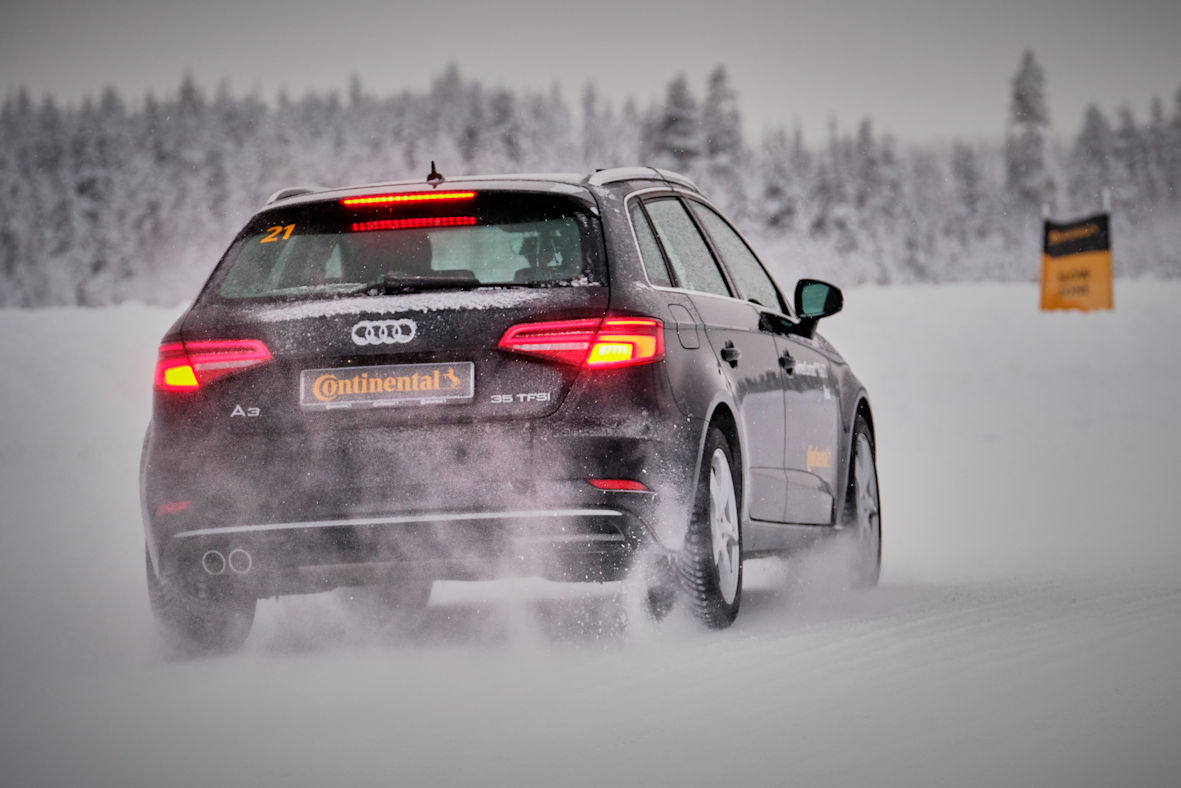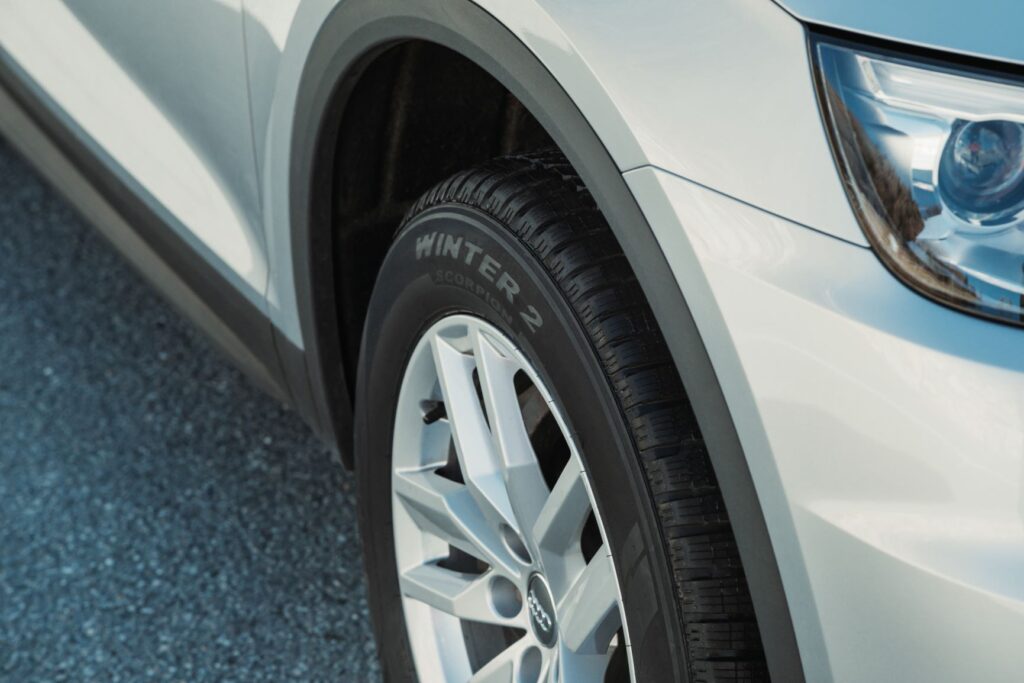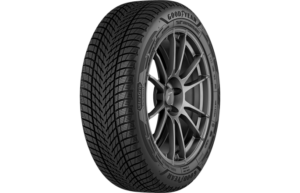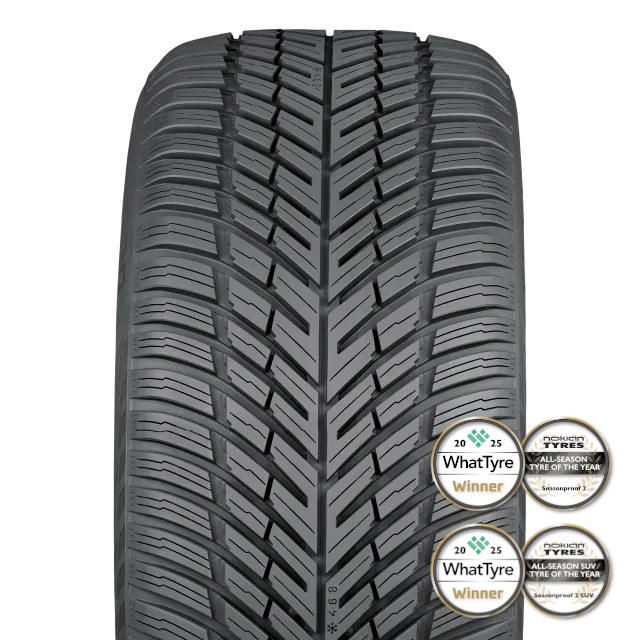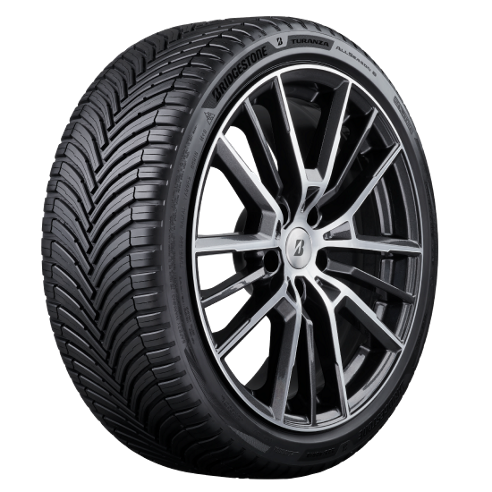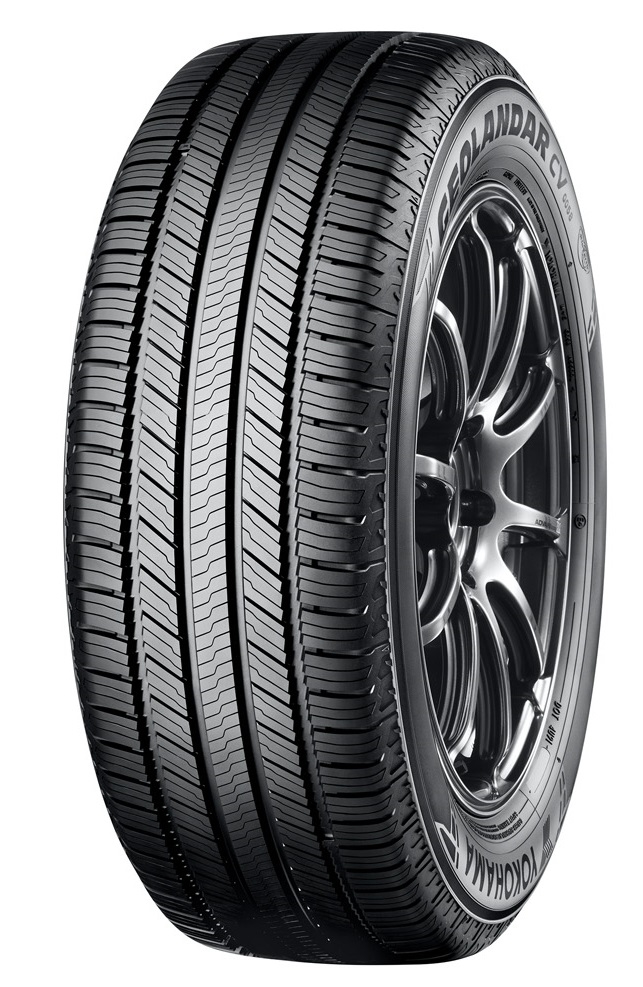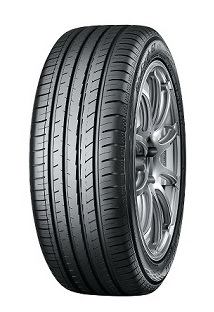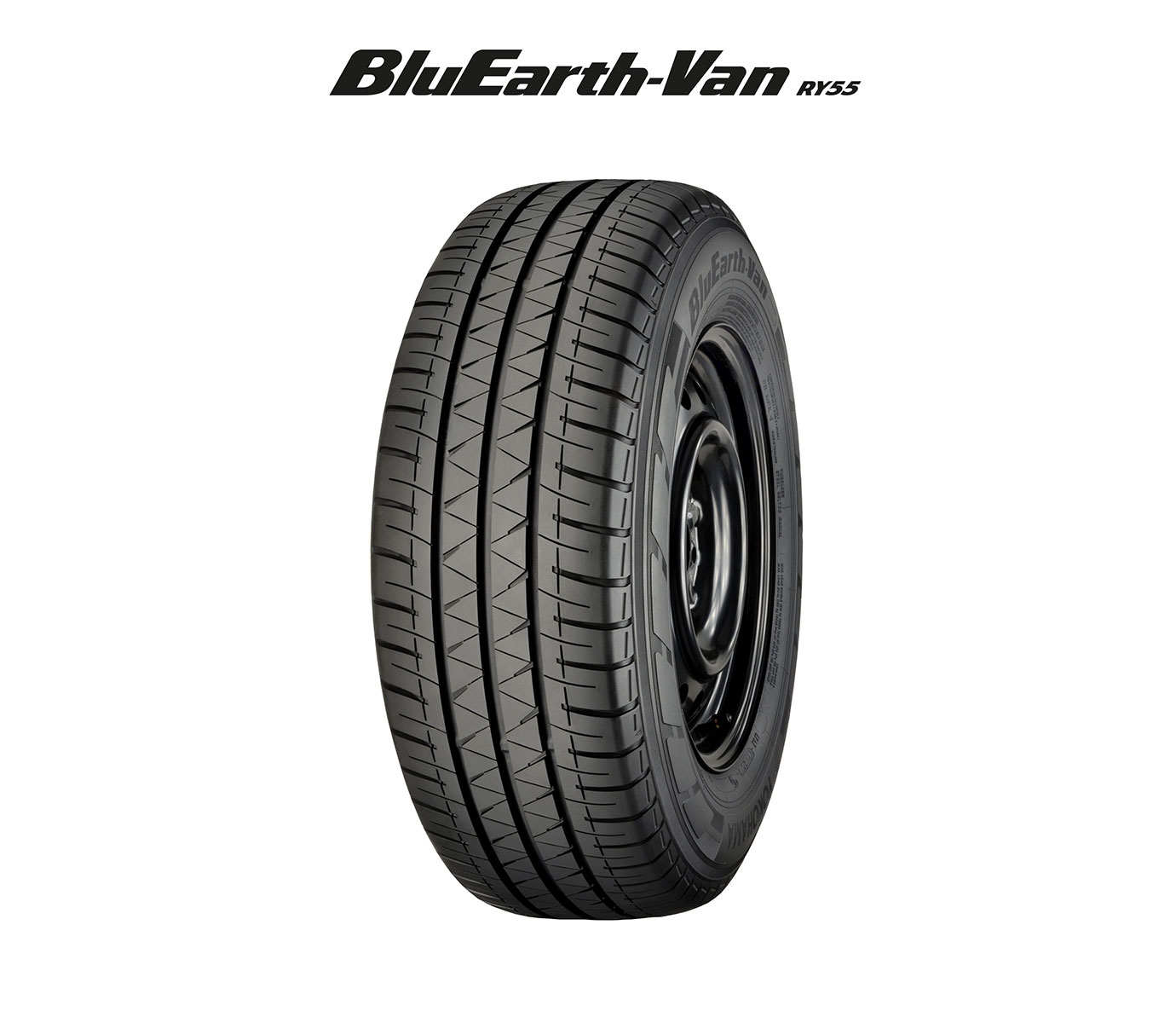WhatTyre.com’s comprehensive database of tyres includes a broad range of winter tyres and tests that are the best possible fitment for tackling severe winter conditions on the roads
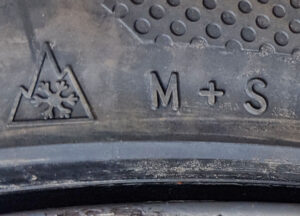
The Three Peak Mountain Snowflake symbol certifies winter performance (Photo: Stephen Goodchild / Tyre Industry Publications Ltd)
In driving conditions where ice and snow make roads treacherous, the best way to guarantee winter mobility is by fitting products engineered for traction in sub-zero temperatures. While high quality all-season tyres now carry the Three-Peak Mountain Snowflake on their sidewalls, certifying their suitability for winter use, WhatTyre always advocates for fitting the most suitable tyre for each driver’s individual needs: helping you find the best tyre for you. This can mean that a seasonal tyre change remains the best answer, if you drive in particular high-elevation areas in the UK, or intend to tackle the roads of northern Europe, for example.
WhatTyre’s Winter Tyre of the Year 2025 shortlist offers 13 winter tyres that between them offer market-leading options to achieve an optimal cold weather driving experience for drivers of all types of cars. The selected tyres not only represent the best winter tyres that are widely available at the time of this guide’s publication; they also offer a range of products that cover the largest SUVs and the most powerful performance cars down to the most compact runarounds.
While we have selected one winning tyre, we always recommend fitting the right tyre for your car, and with our winning tyre this year being tuned specifically to SUVs, it is necessary for some drivers to reach for the alternatives on this list. There are thousands of winter tyre models to choose from, so our list of the 13 best empowers you to select a market-leader according to a range of data.
Why should you trust our recommendations? Alongside consideration for manufacturers’ sustainability credentials and their ability to meet the high standards of car manufacturers in supplying original equipment tyres, the bulk of our data-driven approach to ranking tyres comes from independently verified tyre testing data, which measures the all-round performance of these tyres. Ultimately, we use our proprietary Tyrescore algorithm to award every tyre with a mark out of 10 – a headline certification of a tyre’s quality. Couple this with our editorial team’s collective 60 years’ experience of covering the tyre business, and we represent an authoritative and completely independent voice in tyres.
WhatTyre’s Tyrescore
The latest iteration of our dynamic tyre rating gives an indicative mark out of 10 to every tyre available in the UK market. Its special formula accounts for tyre labelling grades for safety, fuel economy and noise, and more than 8,000 independent tyre test results. The 2.0 version of the algorithm added credit for tyre models that are chosen by car manufacturers for factory fitment or approval. Version 2.1 also considered the provenance of the tyre, with additional credit available for tyre makers who could demonstrate their environmental, social and corporate governance (ESG) responsibility via independent accreditation – an increasingly important consideration for consumers. In the current 2.2 iteration, we have also developed a new way to include data relating to tyre manufacturers’ sustainability credentials, crediting product makers for lower environmental impact and more ethical production.
What are winter tyres?
Winter tyres will ensure your car will stay mobile in the harshest possible cold weather conditions. In a temperate climate like the UK’s these tyres are usually found in very hilly or mountainous regions, or on vehicles that must guarantee the ability to get around even with a thick covering of snow and ice, like the ambulance service. However, they are much more commonly used in the northern or mountainous regions of Europe, where seasonal tyre changes around March and October are commonplace.
These markets often have legislation requiring tyres certified for winter use. This is indicated by the Three Peak Mountain Snowflake (3PMSF) symbol on the sidewall – found on any true winter tyre sold in the European market. This is also available on all quality all-season tyres – however, due to the nature of rubber compounding, all-season tyres must cover a broader operational window, and therefore always represent a compromise.
For many drivers, the convenience and comparatively lower cost of fitting a single tyre year-round is worthwhile. However, winter tyres offer the peak of tyre performance with compounds and tread patterns engineered to perform at their best below 7°C – and particularly when temperatures drop below freezing.
WhatTyre Winter Tyre of the Year 2025
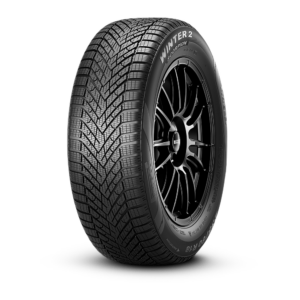
The Pirelli Scorpion Winter 2 is our Winter Tyre of the Year 2025, but as it is an SUV-oriented model, we recommend other models more suitable for other applications (Image: Pirelli)
Each year’s season of tyre testing data, generally released from autumn through to the New Year, demonstrates the strength of competition in winter tyres. Of the 13 tyres on our shortlist this year, two former winners of the award continue to stand out in the Continental WinterContact TS 870 P – a tyre targeting higher performance cars in particular – and the Bridgestone Blizzak LM005, which remains a very strong option for more everyday drivers, though the manufacturer has a newer option coming into the market now, which also makes our shortlist. Both of these tyres get our Highly Recommended rating in 2025.
However, the clear Winter Tyre of the Year 2025 is a brand-new SUV tyre from Pirelli, the Scorpion Winter 2.
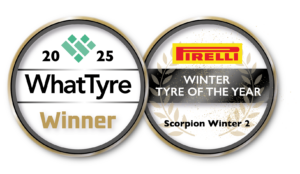 The Pirelli Scorpion Winter 2 had a spectacular entry into the independent tyre testing scene in 2024/25, gaining top marks in its Auto Motor und Sport and Auto Straßenverkehr tests. As a consequence, the tyre sits reasonably comfortably at the summit of our recommendations list. The tyre builds on innovations pioneered by the Cinturato winter tyre, carrying them through into the world of SUVs, with a tread that features ‘extendable’ variable geometry sipes.
The Pirelli Scorpion Winter 2 had a spectacular entry into the independent tyre testing scene in 2024/25, gaining top marks in its Auto Motor und Sport and Auto Straßenverkehr tests. As a consequence, the tyre sits reasonably comfortably at the summit of our recommendations list. The tyre builds on innovations pioneered by the Cinturato winter tyre, carrying them through into the world of SUVs, with a tread that features ‘extendable’ variable geometry sipes.
Thanks to the 3D structure, these sipes also change shape according to the state of wear of the tread. The tread features roughly 51 metres of sipes that deliver greater grip on snow: an increase of 20% of useful area compared to the previous Scorpion Winter. The tread blocks are also reinforced and larger than those on the Cinturato, to meet all the demands of modern SUVs and deliver greater grip, which leads to excellent braking and driving performance both on snow and wet surfaces. The Scorpion Winter 2’s compound was developed through the use of an innovative system of liquid polymers in order to improve performance in the rain and snow.
With a size range between 18 and 23 inches, the tyre is WhatTyre’s key option for winter drivers of SUVs.
Highly Recommended tyres
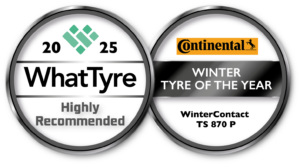 As previously mentioned the Continental TS 870 P and the Bridgestone Blizzak LM005 are our Highly Recommended winter tyres for 2025, providing our top recommendations for performance cars and everyday driving in severe cold weather.
As previously mentioned the Continental TS 870 P and the Bridgestone Blizzak LM005 are our Highly Recommended winter tyres for 2025, providing our top recommendations for performance cars and everyday driving in severe cold weather.
Last year’s winner, the Continental WinterContact TS 870 P was universally praised in 2024/25 independent tests, winning top rankings in no fewer than five separate tests. The tyre employs an enhanced Cool Chili compound and uses Hydro Grooves. To deliver added safety for drivers who fit wider tyres, Continental’s developers chose to move away from the conventional V-shaped tread. Instead, for the WinterContact TS 870 P they selected a stiffer construction with four large circumferential grooves running between the rows of tread blocks. This tread structure is very different from that of the predecessor tyre and is said to offer major advantages, particularly in the wet. It displaces the water from the contact patch very quickly, resulting in better handling, shorter braking distances and effective protection against aquaplaning. Compared to the TS 850 P, the new tyre delivers a 4% improvement in wet braking and an 8% improvement in aquaplaning properties − without compromising its performance in other respects. Other improvements include 5% in braking on ice, 6% in dry handling, and 6% in handling on snow. Ecological credentials include a 2% reduction in rolling resistance and a 16% increase in mileage.
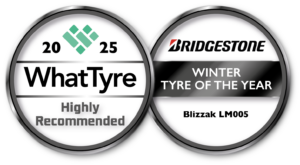 It took a long time for the Bridgestone Blizzak LM005 to be knocked off its perch as our top winter tyre recommendation, winning in this category in three consecutive years previously. Launched in 2019, the tyre may be one of the oldest models in our buyers’ guide, but secured the highest rating in the latest Autozeitung winter tyre test. The LM005 features Bridgestone’s Nano Pro-tech compound, helping it stay soft at very low temperatures and become one of the best available in snow and ice braking and wet grip, certified by independent testing. Bridgestone’s nano-selective compound mixing technology also improve the dispersion of silica for more consistent winter performance. The tyre can also be obtained with DriveGuard, Bridgestone’s technology that extends runflat capabilities to its conventional tyres, in certain sizes. This technology allows drivers to continue to drive on a punctured tyre at lower speeds for around 50 miles.
It took a long time for the Bridgestone Blizzak LM005 to be knocked off its perch as our top winter tyre recommendation, winning in this category in three consecutive years previously. Launched in 2019, the tyre may be one of the oldest models in our buyers’ guide, but secured the highest rating in the latest Autozeitung winter tyre test. The LM005 features Bridgestone’s Nano Pro-tech compound, helping it stay soft at very low temperatures and become one of the best available in snow and ice braking and wet grip, certified by independent testing. Bridgestone’s nano-selective compound mixing technology also improve the dispersion of silica for more consistent winter performance. The tyre can also be obtained with DriveGuard, Bridgestone’s technology that extends runflat capabilities to its conventional tyres, in certain sizes. This technology allows drivers to continue to drive on a punctured tyre at lower speeds for around 50 miles.
Finalists offer more options
While the other tyres on this list do not quite match the all-round abilities of our top recommendations, all our finalists also warrant consideration, with strengths that may be best suited to your particular requirements.
The Michelin Alpin 6 is a strong all-round winter tyre, especially for small to medium size vehicles, including compact city cars. The Alpin 6 features Michelin’s Evergrip technology, which helps optimise control and safety on snow, even when the tyres are worn. It is among the quietest winter tyres on the market too. It is generally a better rated tyre in its 15 and 16-inch sizes, with ADAC and Auto Bild giving 16” models high ratings this year. Autozeitung found that the tyre lacked more against 17” fitments for larger, more powerful cars.
The Goodyear UltraGrip Performance 3 meanwhile is something of a test star in 2025, in which it was widely praised. The tyre features Snow Protect Technology, which provides increased sipe density – more edges that bite into snowy or icy surfaces for optimal traction and grip. Its snow claws, longer grooves at the shoulder edge, improve performance on soft and deep snow. Wet Braking+ Technology with an optimised round footprint provides better water dispersion in the tyre. Water is pushed to the side rather than to the front, which reduces the risk of aquaplaning and offers excellent performance in wet driving conditions. Innovative 3D sipes in the shoulder part increase tyre stiffness and improve performance on dry roads. The range has fitments certified by Goodyear for EVs too – it has up to 3% lower rolling resistance and weight reduced by as much as 10% compared to the UltraGrip Performance +. The tyre has a more aerodynamic sidewall shape and a new noise-cancelling pattern design reduces interior noise by up to 36% (up to 2 dBA). Goodyear is also introducing its SoundComfort Technology into the line-up.
The Michelin Pilot Alpin 5 is another option in the performance winter tyre segment with a similarly rated SUV variant, the Pilot Alpin 5 SUV. The tyre continues to score highly with titles like Auto Motor und Sport and rivals the Pirelli and Continental tyres closely. It features a new directional tread pattern supports better UHP winter performance in the dry, wet and snow with the Michelin Pilot Alpin 5. The symmetric pattern has a central groove to increase resistance to aquaplaning. Michelin’s latest generation tread compound improves grip across conditions; its innovative formulation integrates a new functional polymer. A new under-tread compound helps the tyre reduce fuel consumption by minimising energy dissipation and reducing rolling resistance. The tyre features a velvet effect on the external sidewall for added flair.
The Continental WinterContact TS 870 is the variant of the German manufacturer’s winter range for small and medium sized vehicles. It has a high-technology tread design and a new iteration of Conti’s Cool Chili compound with optimised crosslink density, features balanced performance improvements over the TS 860, notably 5% shorter braking on ice and grip on snow, seven per cent increased tread life, and best-in-class noise, represented by one-wave (70dB) on the EU tyre label. The tyre features 3D interlocking sipes placed to engage with the snow better, and the new Cool Chili compound, which contributes to the increased grip and shorter braking distances in wet conditions.
While the UltraGrip Performance 3 is the newer model, there is still much to recommend in the Goodyear UltraGrip Performance + SUV variant. Covering the growing SUV and crossover market by offering consumers a technology-packed winter tyre that increases the versatility and contributes to the safety of their vehicles. Several European motoring publications, including Auto Express and Auto Bild have lauded the tyre’s performance, with Auto Motor und Sport and Auto Straßenverkehr both awarding the tyre recommendations in their latest tests.
Hankook’s W330 Winter i*Cept Evo 3 delivers excellent control in the snow and ice, as well as advanced wet and dry performance in cold weather. The snow pick traction grooves create a unidirectional tread design in a gull wing shape that improves the traction and braking performance on snow. The high loading silica compound provides an increased wet performance. Natural ingredients ensure the rubber’s flexibility in a wide temperature range. It offers another alternative in the performance and SUV category, with Auto Bild Allrad praising its all-round driving characteristics, despite being a bit noisier than alternatives, in its “exemplary” rating.
The Bridgestone Blizzak 6 has big shoes to fill, with the LM005 a “Highly Recommended” tyre this year and one which won no fewer than 23 winter tyre tests. The Blizzak 6 delivers traction on snow and wet braking while integrating Enliten, the Bridgestone group technology addressing the trend towards greater sustainability. Bridgestone describes Enliten as a toolbox for reconciling sustainability-related characteristics, such as reducing emissions and lowering resource consumption, with the best performance characteristics that a tyre can achieve. Bridgestone reports that Blizzak 6 features 25% renewable or recycled materials and a wear life that is 32% higher than the predecessor model. It also means the tyre is compatible with electric vehicles. Depending on how important this sustainability approach is to you, or if you drive an EV, this may be the better choice than the LM005.
The Dunlop Winter Sport 5 was designed to help consumers continue to navigate unforeseen winter roads and conditions, including black ice, slush, icy patches, melting snow and puddles. In order to deliver these characteristics, more than 400 R&D specialists spent 24 months testing on three different continents. Innovations include an increased number of tyre blocks, which offer enhanced performance on snow-covered roads and angled centre sipes, which provide more lateral grip on slippery surfaces. Additionally, amplified depth of grooves defends against aquaplaning, and optimized construction and weight distribution improves on fuel efficiency. The tyre has been in the market for a relatively long time but remains highly rated in tests such as AutoBild Sportscars recent winter edition.
Finally, the Pirelli Cinturato Winter 2 offers another option for medium-sized cars and crossovers. Launched in 2021, the tyre offers top performance in snowy and wet conditions, along with a high level of driving comfort. The Pirelli tyre development team utilised advanced virtual reality systems to optimise the tread of the Cinturato Winter 2 and maximise contact with the road surface. The result, says Pirelli, is a tyre that is perfectly balanced and generates even pressure for greater grip and shorter braking distances in wet and snowy conditions. This simultaneously improves the vehicle’s controllability and driving precision. The tyre’s compound and tread design also work to reduce the risk of aquaplaning. While the tyre tested less well than contemporaries this year, it remains a comparatively economical winter tyre, which is also relatively quiet.
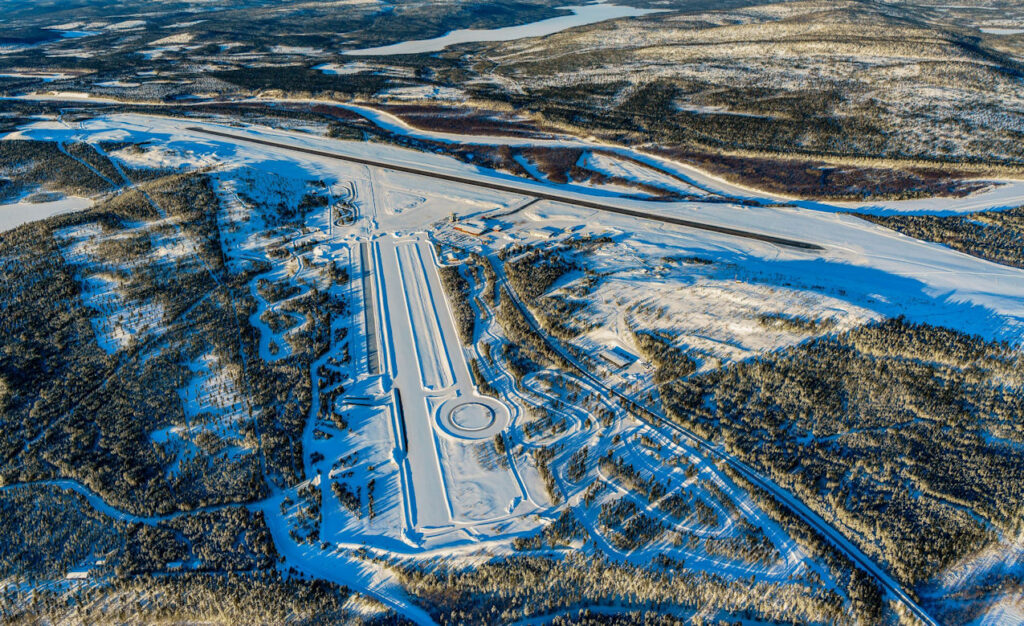
The UTAC Ivalo Proving Ground, one of Northern Europe’s many testing sites for winter tyres (Photo: Nexen Tire)
Should I buy winter tyres?
There are great reasons to fit winter tyres between around October and March. In tests they clearly demonstrate significantly better performance than all-season tyres on snow and ice. Specialist winter tyres contain “sipes”, small slits in the tread blocks, which bite into snow and ice. They are also made with rubber compounds offering better performance under 7°C, the average temperature in commuting hours for up to half the year in the UK. Fitted and maintained in conjunction with quality summer tyres, drivers can expect the best possible performance and maximum longevity year-round.
How about if your car has 4-wheel drive? If the postcard-sized tyre contact patches cannot generate grip, four-wheel drive is not much more helpful than two. Braking distances are decreased greatly on the slipperiest winter surfaces with winter tyres. At only 30mph, a car on summer tyres will take around two more car lengths to come to a halt versus one on quality winter tyres.
Overall, if guaranteed mobility in harsh cold conditions is essential, winter tyres are the best possible option.

